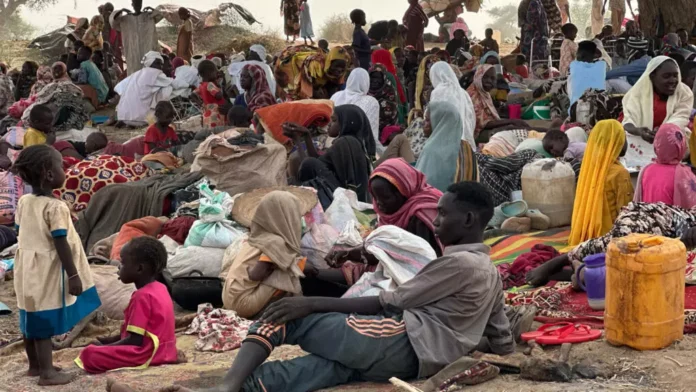Recent data from the International Organization for Migration (IOM) reveals a sharp decline in El Fasher’s population, with a 62% decrease since the outbreak of war in April 2023. The city now hosts approximately 413,000 people, including 204,000 internally displaced persons (IDPs) and 209,000 non-displaced residents. Amid daily escalations in fighting, 770 people fled from El Fasher to the neighboring locality of Tulus between October 2 and 4, 2025.
IOM’s tenth humanitarian report on North Darfur highlights widespread displacement affecting over 1.9 million people—about 20% of Sudan’s total displaced population. Tulus remains the main refuge area, accommodating nearly 576,000 displaced individuals, more than doubling since March. Other key host areas include Dar Al Salam with 239,399 IDPs, and El Fasher itself with 204,454 IDPs. The displaced population in Tawila has also doubled over six months, while displacement in El Fasher has declined by 70% due to ongoing armed conflict.
UN Humanitarian Coordinator in Sudan, Denise Brown, recently visited Tulus, urging an immediate ceasefire and unimpeded humanitarian access. Her five-day journey involved crossing three countries, multiple flights, and extended road travel. During the visit, she inspected Argo camp for displaced people from El Fasher and a health clinic operated by Save the Children providing crucial care to pregnant women and children.
Since April 2023, North Darfur has seen 222 incidents triggering displacement, including 166 clashes and attacks, along with 56 flooding and fire-related events. The number of Sudanese crossing into Chad rose by 45% in the past year, reaching over 1.19 million by September 2025. A major displacement wave occurred in April 2025 when attacks on Zamzam camp uprooted nearly 499,000 people—almost the entire camp population. Renewed clashes in August and September displaced more than 12,000 people from El Fasher and Abu Shouk camp.
The humanitarian situation is dire: 78% of households in El Fasher lack access to adequate healthcare due to facility shortages, insecurity, and medication gaps. Common illnesses include malaria (78%), respiratory infections (29%), and diarrheal diseases (22%), signaling a collapse in essential health services. Though 63% of households have improved water sources, 28% spend over an hour collecting water, and 54% face security risks during water collection. In Dar Al Salam, 88% of households report unaffordable water costs.
Food insecurity is widespread; 75% of families avoid markets due to security fears, and 62% describe their food situation as very poor. Nearly half of households rely on emergency coping strategies such as reducing meal frequency or selling assets.
Security risks persist with 84% of households fearful of unexploded ordnance in their areas and 24% experiencing movement restrictions, primarily due to insecurity and landmines. Only 21% of the population can reach a health facility within 15 minutes, and electricity supply averages less than 30 minutes daily, reflecting severe infrastructure breakdown.
Field teams forecast continued displacement from El Fasher to Tawila and Dar Al Salam and increased crossings into Chad and Central Darfur amid ongoing conflict and limited access to services. While 65% of displaced intend to remain where they are, 20% hope to return home, 8% plan to move elsewhere in Sudan, and 2% aim to leave the country.
IOM warns that North Darfur faces one of Sudan’s most severe displacement crises and calls for expanded humanitarian response and secure corridors for aid delivery. Without urgent action, worsening conditions could trigger new waves of displacement both within and beyond the state.


